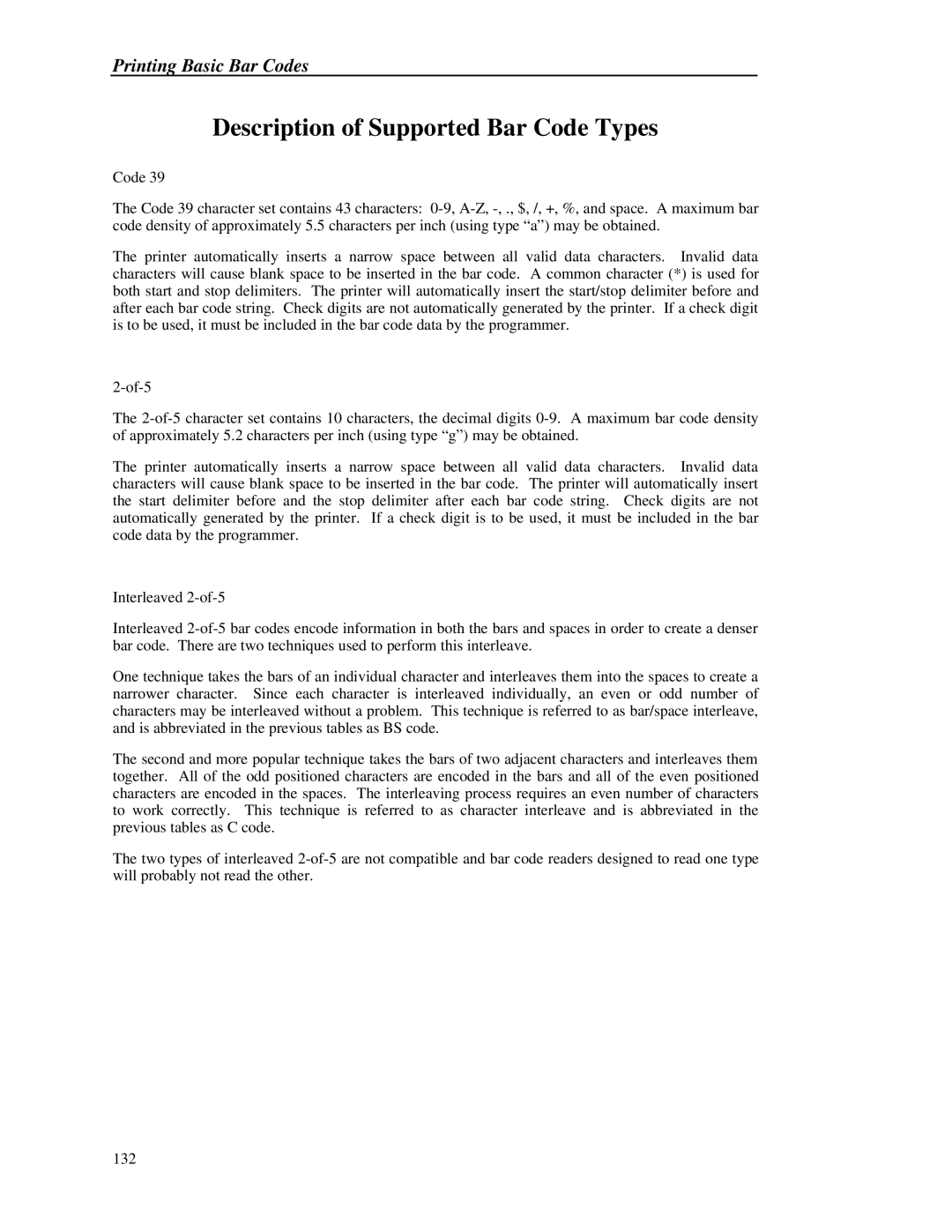Printing Basic Bar Codes
Description of Supported Bar Code Types
Code 39
The Code 39 character set contains 43 characters:
The printer automatically inserts a narrow space between all valid data characters. Invalid data characters will cause blank space to be inserted in the bar code. A common character (*) is used for both start and stop delimiters. The printer will automatically insert the start/stop delimiter before and after each bar code string. Check digits are not automatically generated by the printer. If a check digit is to be used, it must be included in the bar code data by the programmer.
The
The printer automatically inserts a narrow space between all valid data characters. Invalid data characters will cause blank space to be inserted in the bar code. The printer will automatically insert the start delimiter before and the stop delimiter after each bar code string. Check digits are not automatically generated by the printer. If a check digit is to be used, it must be included in the bar code data by the programmer.
Interleaved
Interleaved
One technique takes the bars of an individual character and interleaves them into the spaces to create a narrower character. Since each character is interleaved individually, an even or odd number of characters may be interleaved without a problem. This technique is referred to as bar/space interleave, and is abbreviated in the previous tables as BS code.
The second and more popular technique takes the bars of two adjacent characters and interleaves them together. All of the odd positioned characters are encoded in the bars and all of the even positioned characters are encoded in the spaces. The interleaving process requires an even number of characters to work correctly. This technique is referred to as character interleave and is abbreviated in the previous tables as C code.
The two types of interleaved
132
